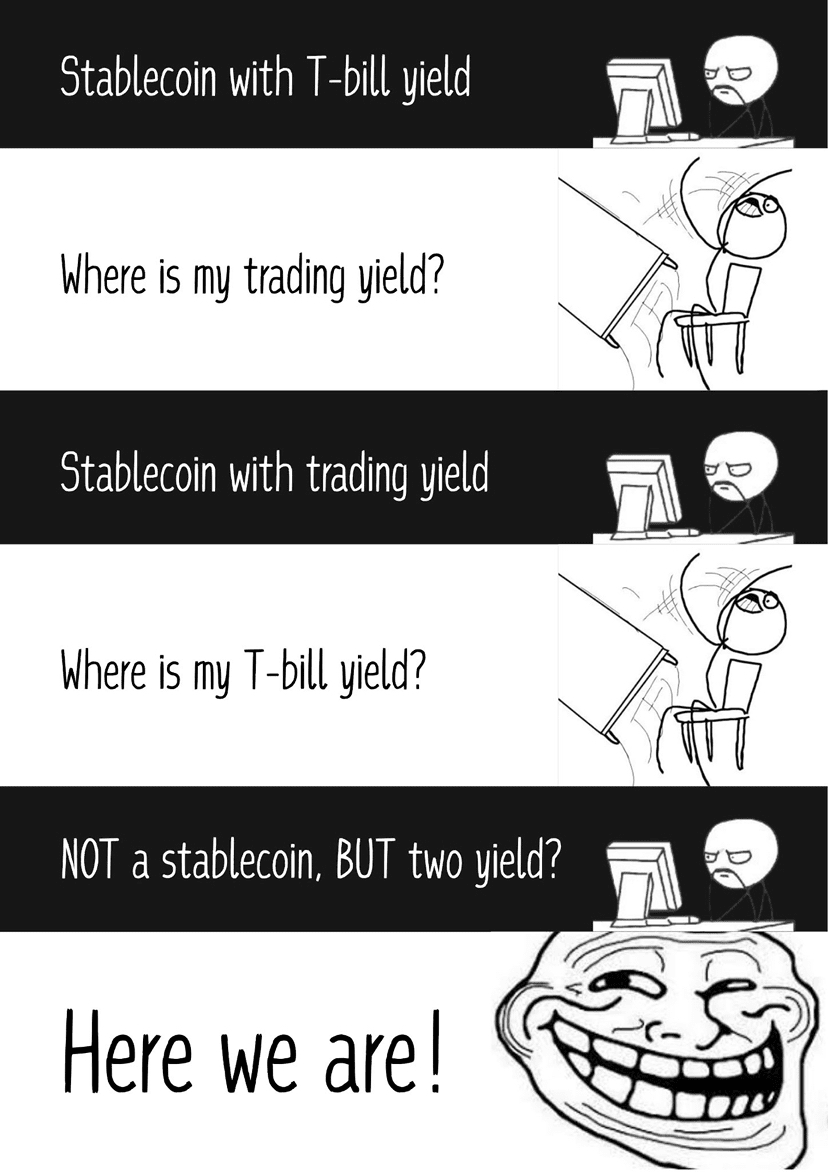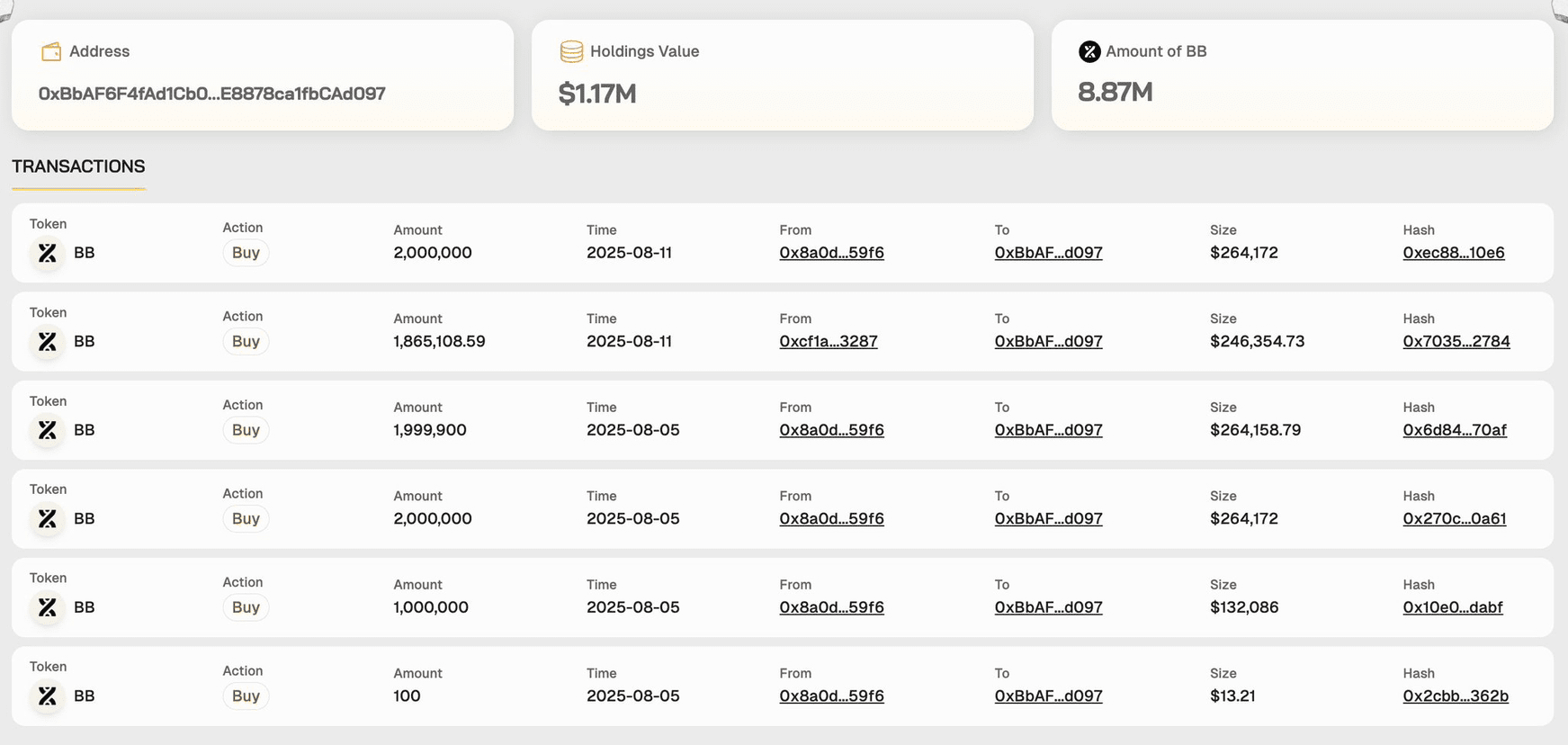bb is still a very strong coin in these two years; this project can be summed up in one sentence: BounceBit turns Bitcoin into a 'verifiable, composable, yield-generating' productive asset. The approach is neither purely DeFi nor purely centralized, but CeDeFi: regulated custody + on-chain transparency + an extensible ecosystem.
How did it manage to intertwine CeFi and DeFi?
The core is three things: compliant custody, on-chain mirroring, and composable products.
Compliant Custody: Users' BTC/WBTC/BTCB, etc., first enter regulated custodians (Mainnet Digital, Ceffu), clarifying 'who holds the coins'. Ceffu's MirrorX provides 'over-the-counter settlement + on-chain traceability', allowing assets to participate in strategies without needing to be physically transferred to exchanges. The benefit of this approach is reducing counterparty risk and mapping asset status on-chain for transparency.
On-chain mirroring / LCT: Assets that are managed/operated by strategies in CeFi will be 'projected' on-chain in the form of LCT (Liquidity Custody Token) or BBTC, becoming 'certificates' that can be freely combined within the BounceBit network, achieving transparency and liquidity.
Sources of Revenue: Part of it comes from neutral strategies like funding rate arbitrage/hedging on the CeFi side, and part comes from on-chain DeFi, as well as re-staking/validator rewards at the network level. Overall, it's 'CeFi earns certainty, on-chain maintains transparency and composability.'
This combination of 'CeFi custody + on-chain mirroring' has been attempted by many projects after 2024; BounceBit's characteristic is that it has created a BTC re-staking infrastructure + EVM-compatible PoS L1, making it convenient for developers and users to operate in a unified environment.
Security Model: Dual-Token PoS, it's not just about 'staking platform coins'.
The consensus of BounceBit is not the common 'only stake platform coins'. It requires validators to stake both BTC (on-chain mirroring form like BBTC) + BB, which raises the security cost: when penalized for wrongdoing, both high-value assets are affected, increasing the cost of attacks and aligning incentives—binding both native BTC holders and economic participants of this chain.
This is crucial for 'security-sensitive' institutional users: you are not only staking the platform's native currency but also exposing BTC risks, which strengthens the economic constraints of consensus security.
How the revenue engine runs: Three lines running in parallel
CeFi Neutral Strategies: Utilizing MirrorX for OES (over-the-counter settlement), conducting funding rate arbitrage/hedging on major exchanges, T+1 reconciliation, reducing counterparty risks while maintaining transparent on-chain asset mirroring. The benefit of this type of strategy is low volatility and scalability, but it requires high risk control and execution standards.
On-chain DeFi Combinations: With 'certificates' like LCT/BBTC, you can conduct lending, LP, derivatives, etc., within this chain ecosystem, allowing for more flexible strategies and layered revenue curves.
Network Layer Revenues: Staking and re-staking in Dual-Token PoS, validator/delegate rewards constitute the 'underlying Beta returns'. For long-term holders, this is the 'baseline' that can be layered on other strategies.
Ecosystem Carrier: BounceClub mixes BTCFi, DeFi, AI, Meme, GameFi together.
BounceClub is more like the 'application layer integrator' of BounceBit: you can issue coins here, use AI tools for strategies, play arcade, access DeFi primitives, and even combine various gameplay. It serves both ordinary users (low entry barriers) and developers (can list DApps, connect interfaces, create products).
The significance of this layer is to truly turn 'yield infrastructure' into 'consumable product experiences', rather than just a toolbox usable by institutions and geeks.
Liquidity and Launch Path: Binance Megadrop Debut
BounceBit is the first project of Binance Megadrop, with a timeline of April–May 2024, launching on Binance on May 13. The Megadrop model (locking up BNB or completing Web3 tasks) allows it to have good user diffusion and secondary market attention in the early stages of launch, which is also one of the reasons why the 'BTC re-staking track' could quickly gain recognition.
Institutionalization and RWA: Don't just focus on on-chain; offline assets and cash management are also in play.
One easily overlooked point: BounceBit is integrating RWA/cash management capabilities. It has announced the integration of Franklin Templeton's tokenized money market fund into BounceBit Prime, essentially providing a more stable vehicle for the 'cash leg' in the ecosystem, facilitating fund management and strategy assembly. For institutions, this kind of component that 'can be explained to auditors and risk control' is very important.
Official channels are also mentioning the original intention of LCT's design, which is to standardize and tokenize the 'liquidity of managed assets' for unified on-chain scheduling.
Professional investors care more about 'positioning and red lines'.
No empty talk, I will directly state the key risk points:
Counterparty and Operational Risks: Although using MirrorX for OES reduces the risk of directly depositing coins into exchanges, strategy execution still has risk control requirements; in extreme market conditions, funding rate reversals and sudden drops in liquidity will test execution and liquidation.
Complexity of Mechanism: Dual-Token PoS + LCT + CeFi strategies + DeFi combinations may create a 'black box feeling' after layering; the solution is to focus on transparency (custody reconciliation, on-chain mirroring, position disclosure) and governance (parameters, fees, routine disclosure of risk control).
Regulatory Changes: The compliance boundaries of CeDeFi are more sensitive than pure DeFi. Custody, settlement, and yield tokenization involve external regulations; regional differences and policy updates may affect product accessibility. This needs to be managed with a 'regional diversification + product stratification' approach (this is general knowledge, not unique to BB).
Ecosystem Activity: Can BounceClub continue to attract developers and real users? This determines the upper limit of the on-chain 'composable yield'. In the short term, it can rely on activities to drive engagement, but in the long term, it still depends on developer retention and the number of quality DApps.
Who is it suitable for, and how to use it?
Institutions / Professional Users: Use it as 'the revenue hub for BTC assets'—connecting to the MirrorX/custody system for neutral strategies while using LCT/BBTC on-chain for modular configuration, striving for risk control-friendly + composable yield.
High Net Worth / Advanced Retail: More inclined towards a 'one-stop experience': selecting risk-controlled strategies and DeFi modules in Portal & BounceClub, retaining basic staking + moderately leveraging derivatives, paying attention to liquidation and margin lines.
Developers: EVM compatibility + scene-based distribution in App Store/Club, suitable for quickly migrating your existing DeFi/derivatives/yield routing for trial and error.
If you view BounceBit as 'a system that turns BTC into orchestrated, verifiable yield assets', its components fit together: regulated custody and OES lower trust costs, on-chain mirroring and Dual-Token PoS ensure security and composability, BounceClub transforms yield tools into usable products, plus the initial flow and asset accumulation brought by the Megadrop debut. What to observe next is the depth of RWA/cash management integration, ecosystem retention, and the rhythm of disclosure/risk control.
